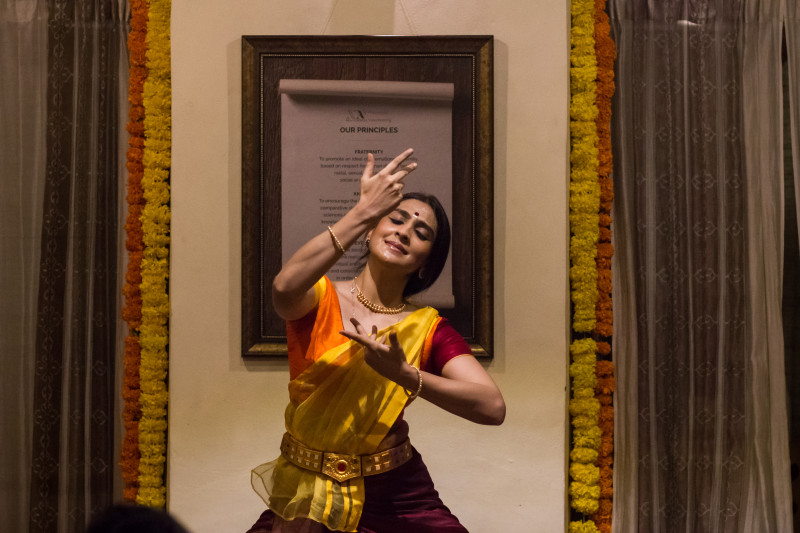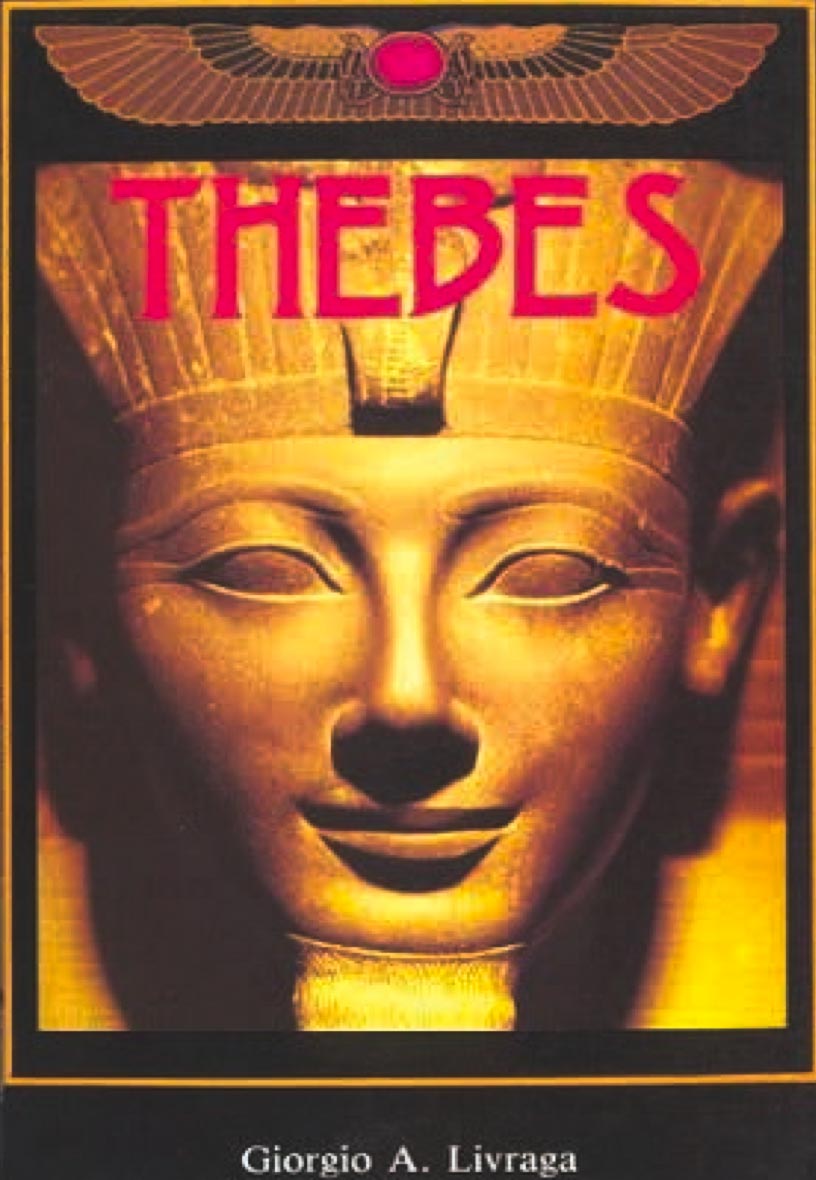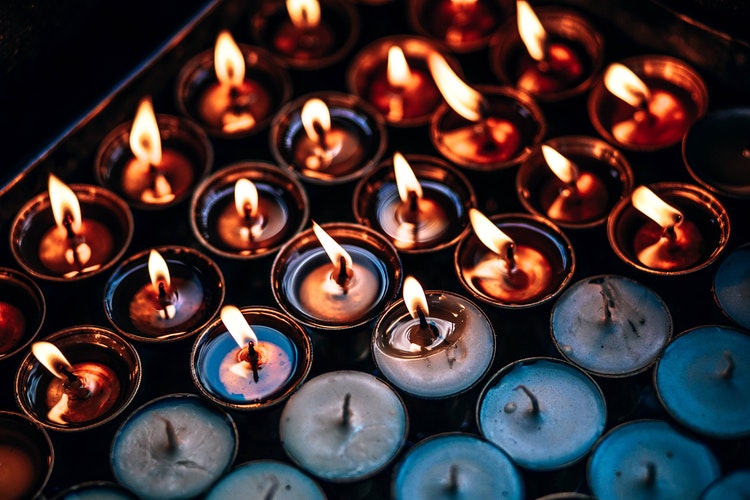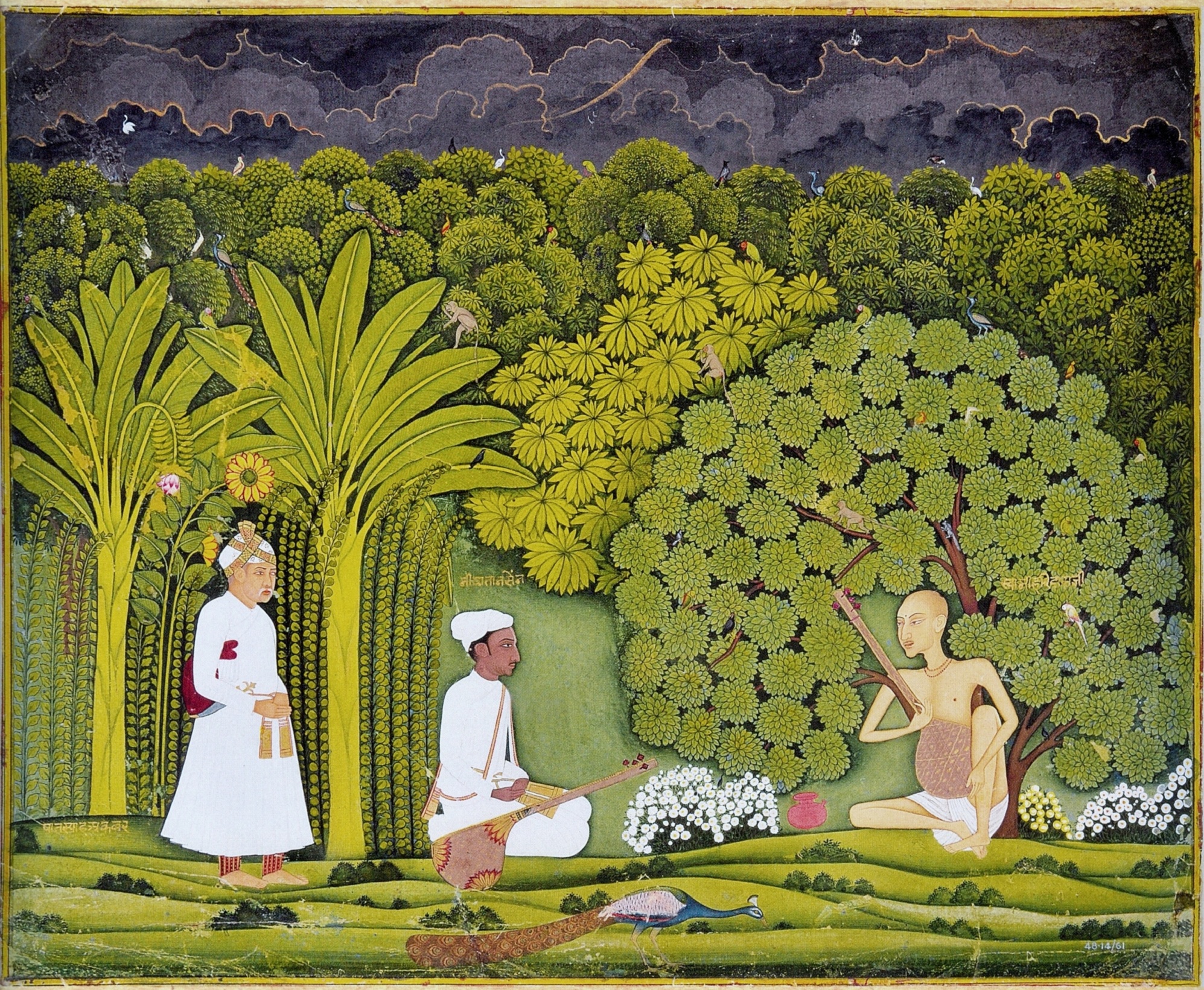The Various Faces of the Divine Feminine
Article By Sangeeta Iyer
 O Mother,
O Mother,
Thou who art present everywhere,
Thou who art the embodiment of Power and Energy,
I Bow to Thee! I Bow to Thee! I Bow to Thee!
– Invocation to Shakti, the Feminine Principle
The universe is a place of balance…Yin and Yang, night and day, summer and winter, masculine and feminine. A balance achieved by complementarity – the equal and opposite effect of dualistic entities. Yin is as essential as Yang, just as night is as essential as day; each has its role and function in the service of life as a whole. So too, the feminine is as essential as the masculine. While they may appear to be diametrically opposed in nature, they are equally important in maintaining the wholeness of life by complementing each other. It is, in fact, this very dualism that enriches life with the kind of friction it needs to make movement possible, that forward and upward movement that facilitates evolution. The dualism of opposing forces makes life vibrant with diversity, and complete in unity, meshed in a unifying harmony that works together, aligned with the rhythm of life.
But when one half seems not to fulfil its role accurately, when women try to be like men, to get ‘ahead’ in the world for example, they appear to surrender some of the unique power of being feminine, so as to gain what they think they’re missing, by not being masculine. Perhaps it’s the same when men express more effeminate behaviour, surrendering some of their innate masculinity, in favour of obtaining the ‘metrosexual’ tag.
And yet, qualities are qualities and their eternal essence endures across time, space and gender. The drive to seek Truth, to honour Justice, to be inspired by Beauty and to do Good in the world applies to everyone, whether they are young or old, men or women. These are everybody’s privilege and, in fact everybody’s duty. Perhaps there are different paths of reaching them, depending on the energy that is dominant within each one – masculine or feminine. And instead of trying to be more ‘like the other’, what if we concentrated on tapping more into that infinite power that each one inherently has, as the seed of potential within? How empowering would it be to discover it, unearth it, nurture it and make it grow into a whole Tree of Life that would feed and shelter the spirits of generations to come? Why not develop the tools that Nature has endowed us with, and unlock their potential, instead of trying to acquire something else?
For there is a power in gentleness which is unharnessed in strength – and yet, we need both. There is a power in surrender which is absent in seizing – and yet, we need both. There is a power in acceptance which is missing in argument – and yet, we need both. Perhaps wisdom is demonstrated by knowing when to use what; to discern between the need to act with assertion and the need to give in with grace. To know when we should take a stand with an emphatic attitude and when we should accept another perspective with gratitude.
So how do we learn to be all of these different things? To embody so many different qualities in one, without feeling conflicted within? For women, perhaps the answer lies in the inspiration inherent in the gamut of feminine ideals in front of us.
Her Various Faces
From the gentle, graceful and seemingly docile Mary of The Goddess in the Gospels (a book by Margaret Starbird) to the fiery, tempestuous goddess Durga, the Divine Feminine encompasses various shades: beauty, courage, justice, love, goodness, purity, compassion and hope – all of these presented in various hues and symbolized in multiple forms across cultures.
We revere these deities as the epitome of these qualities, the ultimate that we can ever aspire to be. We worship them with the hope that their qualities rub off on us somehow, as if we could have a little of their divine power on our side, to meet our ends. But what we should actually be doing is drawing inspiration from them to imbibe their essence and adopt their immortal qualities in our day-to-day lives. To seek just a drop of their grace that could transform us from being biologically female to become a channel of the divine feminine…filled with higher qualities that change the way we are, in our earthly lives.
But how do we actually do this? At first glance, there seem to be more questions than answers, because there is a pantheon of role models from whom to seek inspiration and each one seems very different from the other. Can we learn from all of them and make ourselves more capable? How great would it be to have all their qualities – from the giving, forgiving nature of Sita to the brave and tempestuous fire of Durga? Or the grace of Mother Mary and the courage of Athena, in equal measure? Or the creative power of Saraswati along with the divine beauty of Venus! Can we be a little of each and come closer to a feminine ideal that covers the entire gamut of potential and possibility?
What strikes me as the most beautiful insight about the divine feminine, is that no matter what form she takes, the underlying sentiment is that of love in all its myriad forms. This is perhaps best expressed by the goddess of love herself, Venus, who represents that which is beyond what we know of as ‘human’ love and encompasses a spectrum of love’s diverse aspects. When we use language to define it, we tend to telescope it into a single word – ‘love’, grossly inadequate to convey the vastness of Love in its entirety.
Venus, or Aphrodite, is associated with sexuality and fertility but also embodies the qualities of motherly love, love between friends, and spiritual love. The Founder of New Acropolis, Jorge Angel Livraga Rizzi, has described Botticelli’s Primavera depicting Venus: “…who rules over the past, the present and the future. She is the central axis. She is the Platonic Love which rules over all that is manifested, and takes whatever form is required according to the needs and the degree of consciousness of each individual.” (2) Perhaps we’d do well to bear in mind that love is more expansive than we think, and transcends the need to have someone love us back on a personal level. The most amazing thing about it: the more one gives, the more it fills us from within.
In a different form, the limitless love and unstinting commitment of Isis is celebrated as mystic. Mythology describes her diligent search for the scattered body of her husband Osiris after he’d been murdered. With the help of Thoth and Anubis, she pieced him together again and facilitated his resurrection. Her devotion is, however, a reflection of a deeper truth…a spiritual yearning for the ultimate destination, the search for wisdom. Isis is also perceived to be the divine mother and her suckling of the infant Horus is believed to be the precursor of the defining representation of Mother Mary, with the infant Jesus at her breast.
Athena is the multifaceted goddess of wisdom, courage, inspiration, civilization, law and justice, mathematics, strength, war strategy, the arts and crafts. She is known for her calm temperament. Portrayed as a shrewd companion and patron goddess of heroic endeavour, she is noted to have fought for justice, rejecting any battle that lacked purpose. How much this attitude could help us fight for Truth!
Kuan Yin, the Chinese goddess of mercy, helps childless couples conceive, heals the sick, is the patron of travellers and farmers, and protects souls in times of travail. She is also known to be the goddess who knows when to push the fledgling from the nest. (1) Perhaps true parental love would be to do just that, knowing when to push our fledglings out from their nest instead of molly-coddling them well into adulthood. Genuine parenting perhaps engenders independence in children, making them self-reliant and capable of not just tackling the challenges of life but growing in spirit by fostering individual investigation. Parental love also means allowing children to make mistakes and learn from them, however hard that is to do! But that is what will help them grow – to try, to fail, to try again and again, until they succeed. We can stand on the side lines and guide them, but we cannot walk the walk for them. This unselfish act will help them to truly spread the wings of their potential and become who they can be…to fulfil their destinies as human beings.
The tradition of Tibetan Buddhism venerates the goddess Tara in 21 different forms based on colour and energy, of which Green Tara and White Tara are more well-known. As a whole, Tārā embodies many of the qualities of the feminine principle. She is known as the Mother of Mercy and Compassion, and gives birth to warmth and relief from bad karma as experienced by beings in cyclic existence. She engenders, nourishes, smiles at the vitality of creation, and has sympathy for all beings as a mother does for her children. As Green Tārā she offers succour and protection from all the unfortunate circumstances one can encounter within the samsaric world. As White Tārā she expresses maternal compassion and offers healing to beings that are hurt or wounded, either mentally or psychically. Certainly, all of us could bring more joy, healing, and hope to the world with these qualities.
In the pantheon of Hinduism, there is a feminine triad composed of the consorts of the masculine trinity Brahma-Vishnu-Shiva, which is of Saraswati-Lakshmi-Parvati. In her other avatars, Parvati also manifests as Durga or Kali. Some worship Goddess Durga as Shakti, mother of the universe, believed to be the energy behind the work of creation, preservation and destruction of the world – the power that breathes life-force into everything that is.
Life-Force
Now there’s a clue. The feminine principle sustains life; brings beauty, love, gentleness and caring to a situation. But let’s not forget the other aspect: force. An energy. A power. A driving momentum that makes things happen, charging them with life and energizing them.
Again, perhaps the one word that begins to define this force is love. Not the personal, individual kind that we feel for a person, but the life-creating, life-nurturing kind that we could feel for all humanity if we expand ourselves. And like the harmony between opposites that maintains balance in life, love too, has two aspects: compassion and courage. Perhaps the former is linked more closely to ‘life’ and the latter to ‘force’.
Reviving the Lost Art of Being a Lady
Even in everyday life, love is the greatest quality that the feminine aspect can bring to bear on life. In her book It’s Always Possible, Kiran Bedi speaks about how she transformed the inner lives of the inmates of Tihar Jail when she took over as Inspector General of Prisons. On her first day, she addressed all the inmates assembled together and asked them, “Do you pray?” The bewildered inmates thought they hadn’t heard her correctly, so she had to repeat her question. She then continued to lead them in prayer. It was the first time that someone had treated the inmates as human beings rather than as criminals. Soon, Bedi introduced regular yoga and pranayama sessions, working on their spirit, day after day. (3) In this case, love took the form of compassion and exemplary inner strength borne out of the sensitivity to recognize the need of the inmates to heal internally…to be guided towards a better self and have the opportunity to atone, rather than just be punished externally. Punishment alone would not erase the motives that made them turn to crime in the first place – in fact it may even breed resentment, perpetuating a vicious cycle of crime. What’s more, to do this as a woman in a strongly masculine profession, and under tremendous systemic pressure to ‘let things go on as before’, takes courage as well as determination.
Malala Yousafzai took a bullet to the head, but that did not stop her from speaking out about the importance of educating girls. Already a champion for the cause of girls being allowed to go to school in her neighbourhood, she made the best use of her traumatic experience and treated it as a springboard to champion this cause in the global arena, having earned the chance to stand at the podium of global advocacy – the United Nations. She became a shining example of love endowed with courage, beyond concern for her personal self. How much more we could achieve for our brothers and sisters, our fellow-beings, if we could show this kind of courage in standing up for the greater good, at any cost to ourselves!
The Daily Choice
In every moment of our lives, there is a choice that comes before us: do we give love, acceptance, compassion and hope? Or do we withhold it? Do we exhibit courage in standing up for what is right, express determination to uphold it and take action on the side of justice? Or do we fail to do so? Do we tap into the higher principles and bring them to our earthly relationships or do we forfeit the opportunity? There are umpteen opportunities on a daily basis…opportunities to draw inspiration from the many facets of the divine feminine and imbibe a little of their spirit. Enabling us to persevere through challenges and overcome not just a single obstacle, but a series of hurdles…to win not just one battle against our circumstances, but another, and another, day after day, battle after battle, always ready for more, yearning to grow – another step further, another step higher.
Because it all comes down to who we really want to be – the victim or the victor. We have the choice, every single day.
Image Credits: By Marie-Lan Nguyen | Wikimedia Commons | Public Domain
The entity posting this article assumes the responsibility that images used in this article have the requisite permissionsImage References
By Marie-Lan Nguyen | Wikimedia Commons | Public Domain
Permissions required for the publishing of this article have been obtained
Article References
1. Kallenbach, Laurel. Oh, Goddess! Is feminine divinity what’s missing in your spiritual life? Gaiam Life: Your Guide to Better Living.




What do you think?